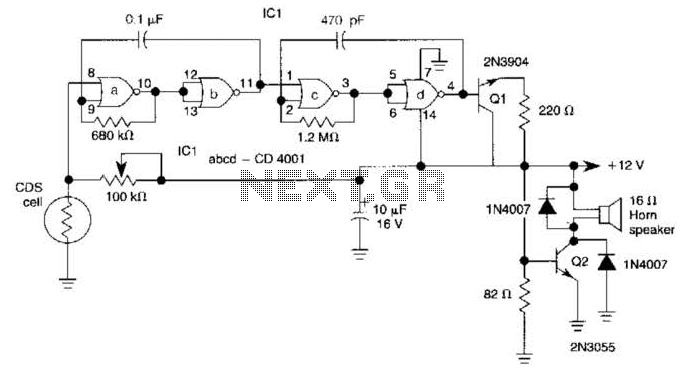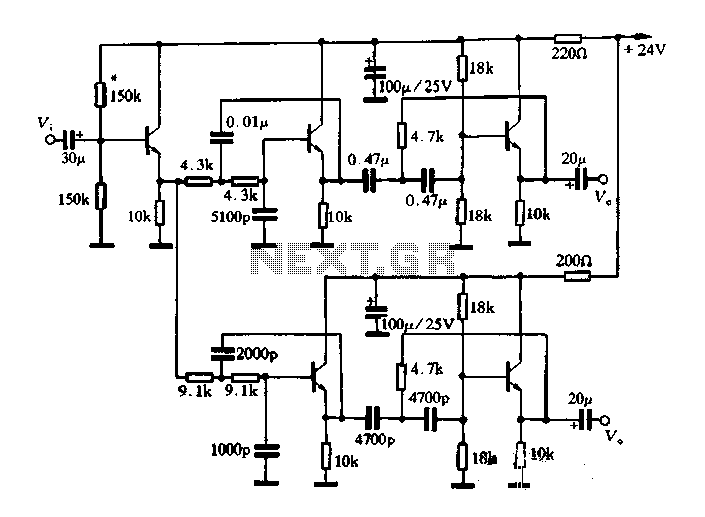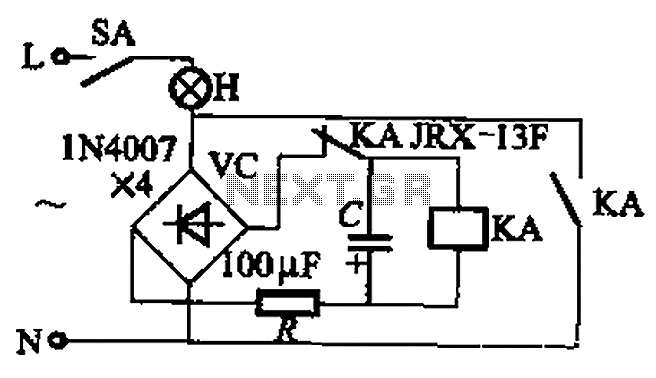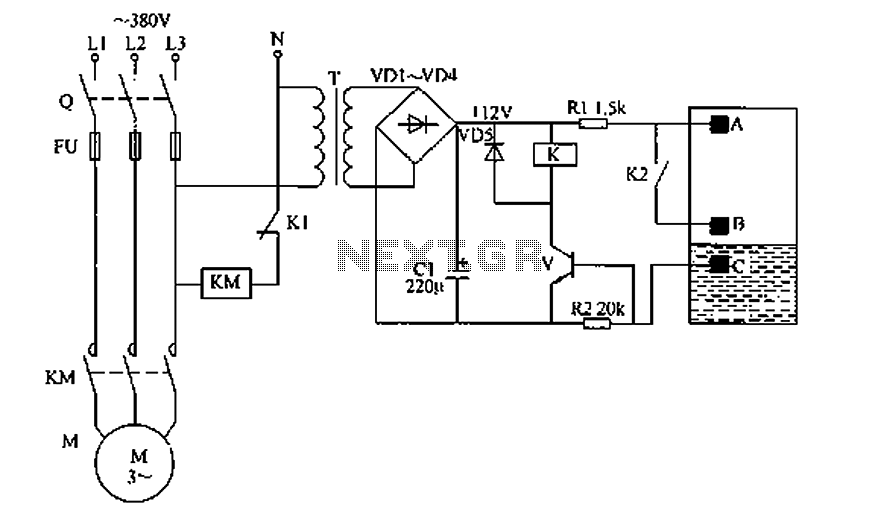
High-Output Pulsed-Tone/Light-Activated Alarm Circuit

This circuit is capable of generating up to 1 W of audio power to drive a speaker or horn. When the CDS cell is exposed to light, its resistance decreases, activating NOR gate (a). This activation causes gates (a) and (b) to produce a low-frequency square wave at 10 Hz. This square wave pulses the 1-kHz oscillator (c) and (d), resulting in the generation of a pulsed 1-kHz tone at a 10-Hz rate. Transistors Q1 and Q2 amplify this signal, with Q2 (2N3055) specifically driving the speaker.
The circuit operates on the principle of light-dependent resistance, utilizing a Cadmium Sulfide (CDS) cell as a light sensor. The decrease in resistance of the CDS cell under illumination triggers the NOR gate configuration, which is fundamental to the operation of this audio signal generator. The output from the NOR gates produces a square wave oscillation at a frequency of 10 Hz, which serves as the modulation frequency for the subsequent oscillator stages.
The 1-kHz oscillator is composed of additional gates (c) and (d), which are configured to generate a stable tone that is pulsed in accordance with the 10-Hz modulation signal. This creates an audio output that is not only tonal but also rhythmically varied due to the low-frequency modulation.
Transistors Q1 and Q2 serve as the amplification stage of the circuit. Q1 is configured to enhance the signal from the oscillator, while Q2, specifically the 2N3055 model, is a power transistor capable of handling higher currents required to drive a speaker. This configuration allows the circuit to efficiently convert low-level audio signals into sufficient power to drive typical speakers or horns, achieving the desired output power of up to 1 W.
Overall, this circuit exemplifies a simple yet effective design for audio signal generation and amplification, leveraging light sensitivity to control the audio output while maintaining a low-frequency modulation for dynamic sound production. This circuit can produce up to 1 W of audio power to drive a speaker or horn. When the CDS cell is struck by light, its resistance decreases thus activating NOR gate (a) thereby causing (a) and (b) to produce a low-frequency (10-Hz) square wave. This pulses the 1-kHz oscillator (c) and (d), causing it to generate a pulsed 1-kHz tone at a 10-Hz rate.
Ql and Q2 amplify this signal. Q2 (2N3055) drives the speaker. 🔗 External reference
The circuit operates on the principle of light-dependent resistance, utilizing a Cadmium Sulfide (CDS) cell as a light sensor. The decrease in resistance of the CDS cell under illumination triggers the NOR gate configuration, which is fundamental to the operation of this audio signal generator. The output from the NOR gates produces a square wave oscillation at a frequency of 10 Hz, which serves as the modulation frequency for the subsequent oscillator stages.
The 1-kHz oscillator is composed of additional gates (c) and (d), which are configured to generate a stable tone that is pulsed in accordance with the 10-Hz modulation signal. This creates an audio output that is not only tonal but also rhythmically varied due to the low-frequency modulation.
Transistors Q1 and Q2 serve as the amplification stage of the circuit. Q1 is configured to enhance the signal from the oscillator, while Q2, specifically the 2N3055 model, is a power transistor capable of handling higher currents required to drive a speaker. This configuration allows the circuit to efficiently convert low-level audio signals into sufficient power to drive typical speakers or horns, achieving the desired output power of up to 1 W.
Overall, this circuit exemplifies a simple yet effective design for audio signal generation and amplification, leveraging light sensitivity to control the audio output while maintaining a low-frequency modulation for dynamic sound production. This circuit can produce up to 1 W of audio power to drive a speaker or horn. When the CDS cell is struck by light, its resistance decreases thus activating NOR gate (a) thereby causing (a) and (b) to produce a low-frequency (10-Hz) square wave. This pulses the 1-kHz oscillator (c) and (d), causing it to generate a pulsed 1-kHz tone at a 10-Hz rate.
Ql and Q2 amplify this signal. Q2 (2N3055) drives the speaker. 🔗 External reference




